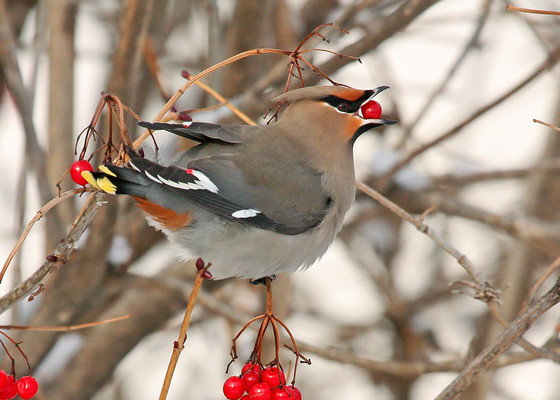
Wisconsin DNR: You Can Help Wildlife By Planting Native Landscaping
Plan now to add native plants to your yard next year to benefit birds like this Bohemian waxwing, shown here on a viburnum. / Photo Credit: Wisconsin DNR
Now is the time to start planning native landscaping to help birds, pollinators and other wildlife next year.
Adding just a few native plants can not only help provide food and shelter for pollinators, birds and other wildlife but can increase your chances of watching wildlife. Rain gardens with specialized native wetland plants can also help handle stormwater on a property and help keep lakes, rivers and groundwater clean.
“Late fall and winter are a good time to get started planning for your native landscaping next year,” said Amy Staffen, a DNR conservation biologist who shares several tips for native landscaping she even practices in her yard.
“Planting seeds in later fall or winter, including on top of the snow, will help them have a higher germination rate come spring,” Staffen said. “Ordering native plants or seeds now will give you the greatest selection to help meet your landscaping goals.”
Staffen’s “Native Plants for Beginners” list and a plant list for birds from bird expert and DNR Conservation Biologist Ryan Brady are featured in Wisconsin Natural Resources magazine’s winter issue, along with a list of plants for monarch butterflies by the Wisconsin Monarch Collaborative and Madison Audubon.
These colorful plant lists are available for download from DNR’s Native Plants webpage. Subscribing to the magazine now through Feb. 1, 2021, will deliver the guides right to your mailbox, where you’ll also find other great features such as recommendations for winter hikes and snowshoe trails.
The annual Field Notes publication is also included in the Winter issue. It is packed with short stories and photos of DNR Natural Heritage Conservation staff, partners and volunteers protecting endangered species and state natural areas.
Visit the DNR’s Native Plants webpage for a step-by-step native landscaping guide, a video showing tips for landscaping through fall and winter and an expanded list of resources.

